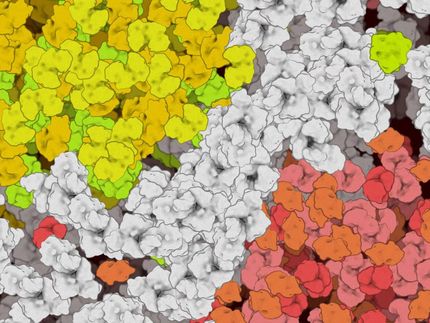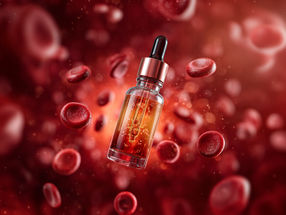Setting the Stage to Find Drugs Against SARS
Scientists at the U.S. Department of Energy's Brookhaven National Laboratory have set the stage for the rapid identification of compounds to fight against severe acquired respiratory syndrome (SARS), the atypical pneumonia responsible for about 800 deaths worldwide since first recognized in late 2002. Researchers from Brookhaven's biology department and the National Synchrotron Light Source (NSLS) characterized a component of the virus that will be the target of new anti-SARS virus drugs. The results were published by biochemistry 2006.
The researchers studied the SARS main proteinase, an enzyme used by the virus during infection to cut newly made viral proteins into gene-sized, functioning pieces. If the proteinase is prevented from working, the virus infection is aborted. Previous studies have revealed that the proteinase is inactive when in the form of single molecules. But once two of those molecules bind together to make a dimer, the enzyme becomes active and is able to play its role in SARS virus reproduction. The challenge for researchers, and the focus of the Brookhaven study, was to determine the concentration at which individual proteinase molecules form active dimers. Knowing this concentration, for which estimates at other laboratories have varied greatly, would allow researchers to search for anti-SARS drugs more efficiently by ensuring that the proteinase used in tests is initially in its active form.
Using three different scientific techniques, including x-ray scattering at the NSLS, the Brookhaven researchers obtained almost identical values for this concentration. Now that this crucial value has been narrowed down to a precise range, researchers can focus on finding compounds that bind to the active form of the enzyme.
Organizations
Other news from the department science
These products might interest you

Systec H-Series by Systec
Safe, reproducible and validatable sterilization of liquids, solids and waste
Autoclaves with 65-1580 liters usable space, flexibly expandable for various applications

Whatman™ folded filter papers by Cytiva
Whatman folded filter papers
Convenient folded formats speed up your sample preparation

Get the life science industry in your inbox
By submitting this form you agree that LUMITOS AG will send you the newsletter(s) selected above by email. Your data will not be passed on to third parties. Your data will be stored and processed in accordance with our data protection regulations. LUMITOS may contact you by email for the purpose of advertising or market and opinion surveys. You can revoke your consent at any time without giving reasons to LUMITOS AG, Ernst-Augustin-Str. 2, 12489 Berlin, Germany or by e-mail at revoke@lumitos.com with effect for the future. In addition, each email contains a link to unsubscribe from the corresponding newsletter.





















































